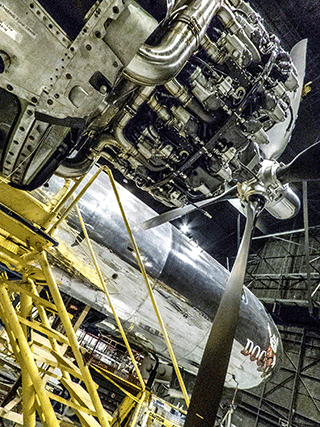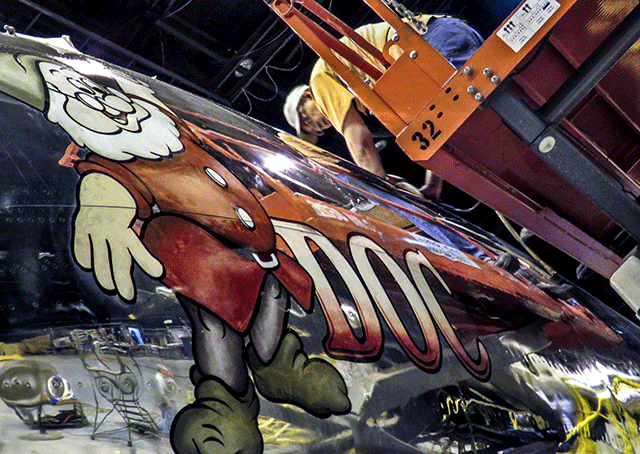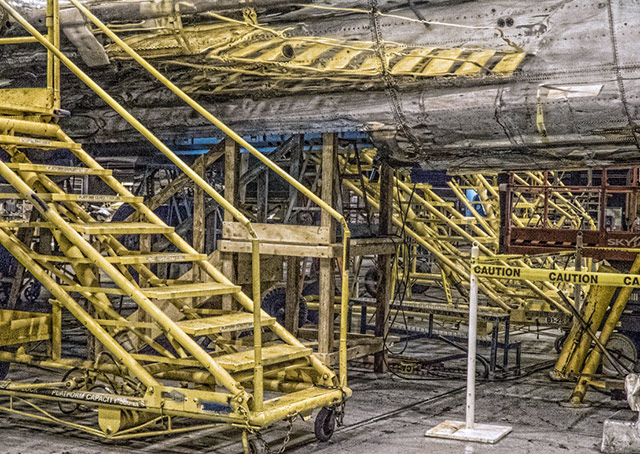No one thought it would be easy, but does it have to be this hard? The huge Boeing B-29 bomber named Doc after one of the seven dwarfs in the movie Snow White and the Seven Dwarfs has had a bomb bay full of issues lately, and has overcome them all.
The bomber has undergone restoration for the past two years by skilled but mostly retired craftsmen in a hangar at Spirit AeroSystems in southeast Wichita, Kansas. Spirit was formerly Boeing, the very plant that built the bomber. It is losing its home at the end of April, but that is a small problem compared to what it has overcome in the past two weeks. Besides, the aircraft is getting closer to the first test of its engines, and that can't be done inside a hangar.
 Doc has traveled a highway littered with problems to get to its current level of readiness, too many to list here. Just looking at the past month or two, there was a windstorm that normally would mean little to an aircraft protected in a hangar. Doc was asked some time ago to vacate the hangar because a paying customer needs it, and thousands of parts have slowly been transferred to semi-trailer trucks outside in the weather. Wind knocked one of the trucks on its side, scrambling thousands of previously organized parts, and tilted another truck into a third truck at a 45-degree angle. Then an additional blast of wind later righted the tilted parts truck.
Doc has traveled a highway littered with problems to get to its current level of readiness, too many to list here. Just looking at the past month or two, there was a windstorm that normally would mean little to an aircraft protected in a hangar. Doc was asked some time ago to vacate the hangar because a paying customer needs it, and thousands of parts have slowly been transferred to semi-trailer trucks outside in the weather. Wind knocked one of the trucks on its side, scrambling thousands of previously organized parts, and tilted another truck into a third truck at a 45-degree angle. Then an additional blast of wind later righted the tilted parts truck.
It seemed two weeks ago that the landing gear had hit an obstacle that threatened to stall the restoration. To repair old landing gear, you need old motors, and the two main gear motors found would raise the gear only halfway. It was discovered those motors would lift only 100 pounds, so 400-pound-capable motors were located. A variety of sources are used for parts, most commonly eBay. It seemed the problem was solved, but the shafts of those motors needed grooves and the ones found had none. To the rescue came two Spirit AeroSystems employees from across the street with special machinery capable of cutting grooves with electric current. Now the gear, as of last week, retracts fully.
The engines received oil for the first time in 60 years two weeks ago, and early reports indicate no leaks. The bigger issue is whether the fuel system will leak when gasoline is added for the first time since it was recovered from a China Lake desert target range. If not, the dream of flying Doc using a Commemorative Air Force crew that normally flies the B-29 Fifi is on hold again.
In the meantime, current U.S. Air Force rules require that an aircraft such as Doc, based as it is at a real U.S. Air Force base—McConnell—will be allowed only one takeoff and no landings. It means Doc can’t come back to what has been its home for many years before the organization Doc’s Friends found funding. Up until then, two years ago, Doc wandered the base from one hangar to another awaiting wealthier times. A friendly talk with an Air Force lawyer recently went well, but it is up to the Pentagon to allow Doc to remain at the base for a few test flights.
If the fuel doesn’t leak, the first flight could come as soon as two months. No one is sure yet where it will land, but the hope is that Doc becomes a Wichita attraction keeping aviation’s heritage alive. The intent is for the aircraft to offer rides to the public.












